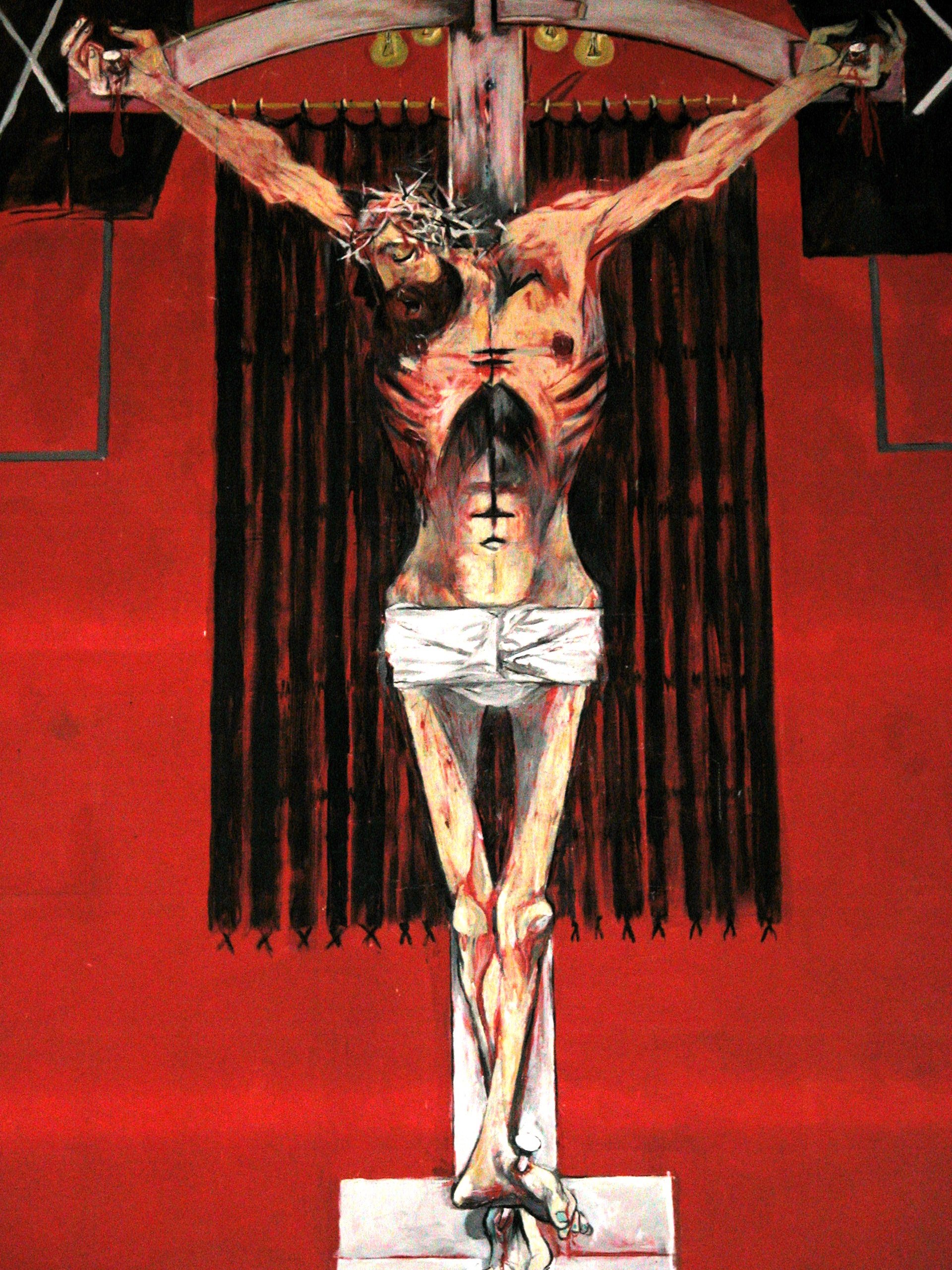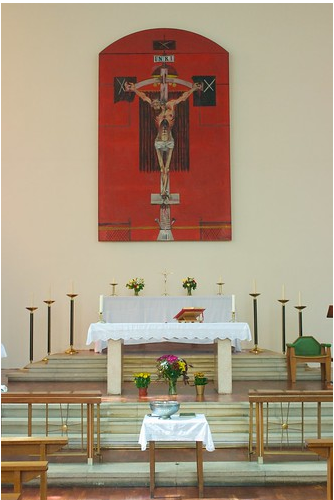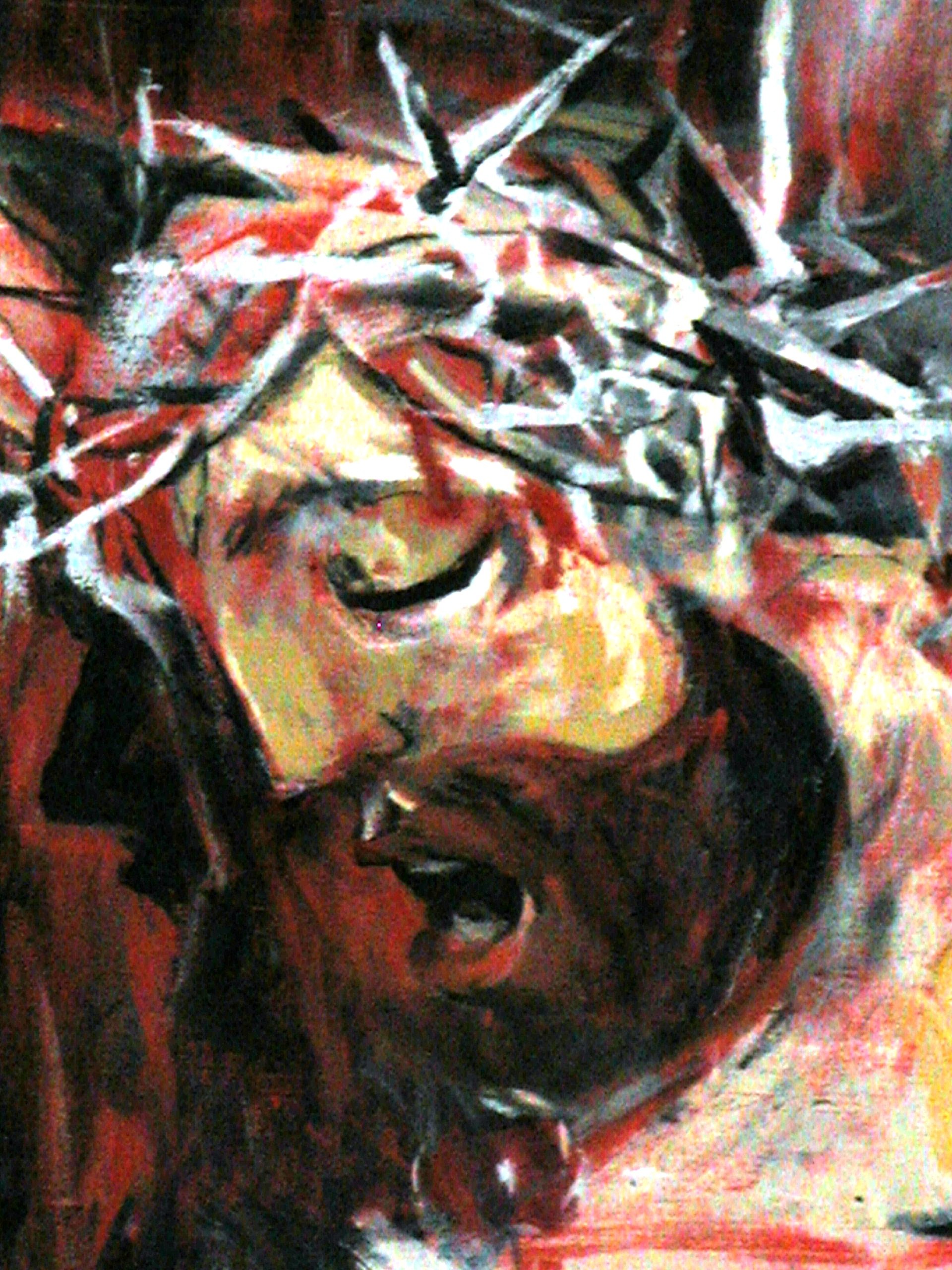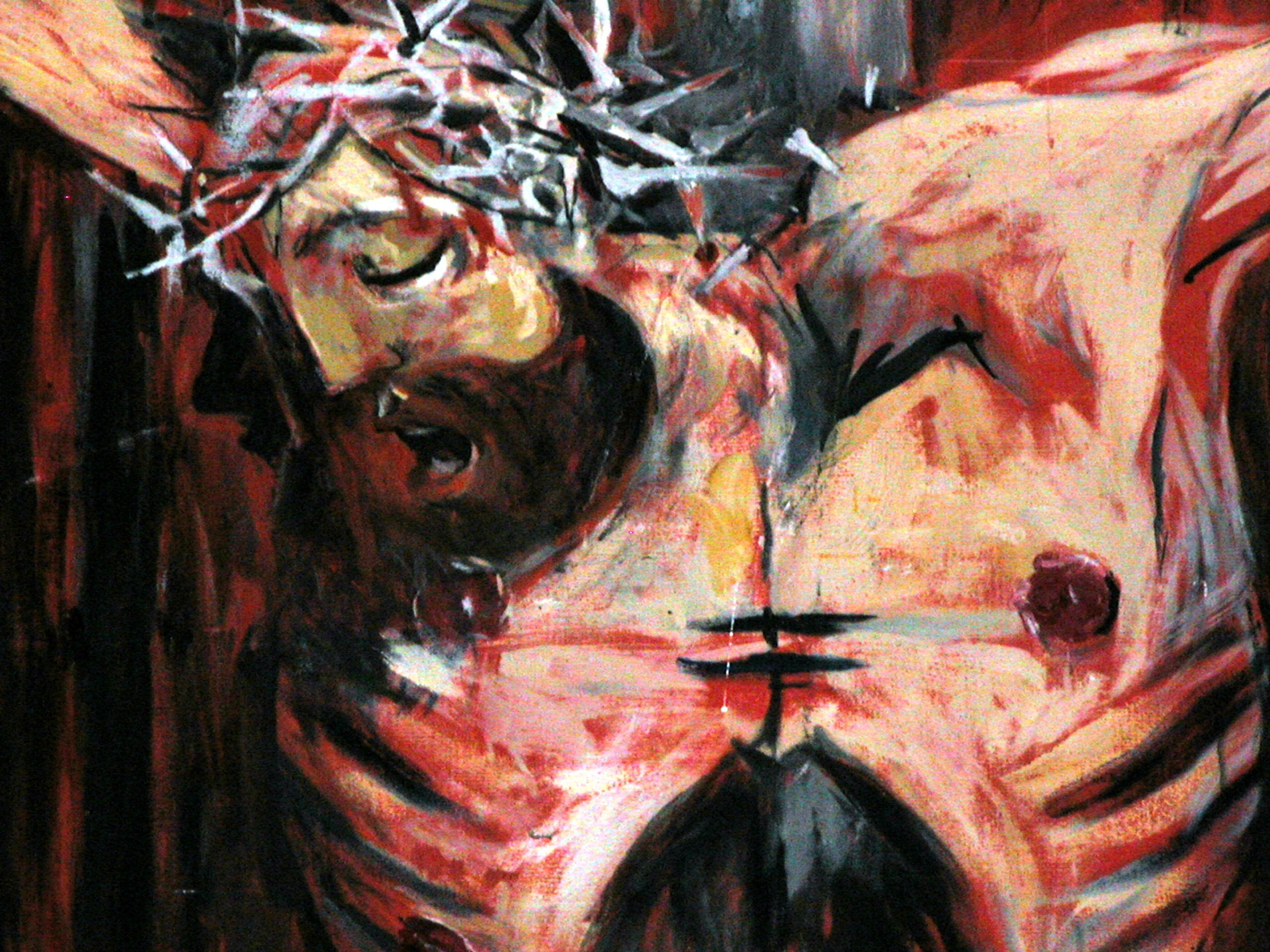Graham Sutherland: Crucifixion




Title: Crucifixion
Artist: Graham Sutherland (1903–1980, British)
Location: St Aidan, East Acton, London (RC)
Date: 1963
‘Graham Sutherland’s Crucifixion, unveiled in 1963, was the third he had created for a church and the first and only commission that he received from a Roman Catholic Church, despite being a Catholic himself. It taps another theme found within the revival of sacred art, a focus on the horror of crucifixion. For Sutherland this derives from reflection on the terror inherent in both Grünewald’s Isenheim altarpiece and the reality of the Holocaust. First seen in sacred art in Stations of the Cross by Albert Servaes, which were removed following a Holy Office decree from a Carmelite chapel in Luithagen, such depictions of the crucifixion have caused scandal because, as Titus Brandsma wrote of Servaes’ Stations, we “do not even dare to behold the sufferings of which we ourselves are the cause.”’ (Source: Jonathan Evens, St Aidan of Lindisfarne East Acton)
During the post-war period Sutherland (1903–1980, British) was widely regarded as the most important painter in Britain. In 1936 he exhibited in the International Surrealist Exhibition in London, because of this he was often referred to in the press as a Surrealist painter, a label he tried to distance himself from. During World War II Sutherland was employed as an official artist as part of the War Artists’ Scheme. He worked in Britain, documenting mining, industry and bomb damage. He was associated with the 1940s neo-Romantic movement in British painting, a movement that celebrated the beauty of rural Britain in contrast to the ruined and industrial Britain he was experiencing during the war. In 1926 he converted to Catholicism becoming deeply involved in religion from 1950 until his death.
His public rows with the Tate director, controversy over his work and socializing with celebrities caused him to become a celebrity himself. It was argued that this became detrimental to his work and was behind his move to southern France in 1955. While heavily collected by French and Italian patrons his absence from Britain in time caused his fame to be overshadowed by friends and contemporaries such as Francis Bacon.
Sutherland focused on the inherent strangeness of natural forms, abstracting them thus giving his work a surrealist appearance. He was drawn to the nature that survived and adapted to the harsh conditions of the Welsh coastline. Although his artistic inquiry lay more in the spiritual aspects of nature rather than religion, two of his best known works were commissions for sacred spaces. Sutherland was commissioned to paint a crucifixion for St Matthew’s church in Northampton in the mid-1940s. He had been deeply moved by the photographs of concentration camp victims that had recently been published. These images as well as Matthias Grünewald’s iconic Isenheim Altarpiece became the inspiration for a painting that was critically hailed as defining the human condition in the immediate post-war era.
In 1952 Sutherland exhibited in the British Pavilion at the Venice Biennale along with the New Aspects of British Sculpture Group. Major retrospectives of Sutherland’s work were held at the Tate Gallery in 1982, France in 1998, and the Dulwich Picture Gallery in 2005.
Further Information
Medium: Oil painting
Size: 18 x 10ft
Permanent display
See Sutherland’s The Crucifixion (St Aidan’s) on the Ecclesiart map here.
Commissioner: Fr James Ethrington, parish priest at the time
Other artworks in churches by Graham Sutherland: Christ in Glory Coventry Cathedral; Noli me tangere Chichester Cathedral; The Crucifixion St Matthew’s, Northampton
Other artworks in St Aidan of Lindisfarne, Acton: Triptych with Our Lady of Walsingham (Roy de Maistre); stations of the cross (Arthur Fleischmann); angels (Adam Kossowski); head of Christ (George Chapman); window (Pierre Fourmaintraux).
Related A&C journal Articles: Graham Sutherland Noli me tangere 4/41, Graham Sutherland Tapestry of Christ in Majesty 3/41, Graham Sutherland Christ Appearing to Mary 18/40, Graham Sutherland Stephen Laird on 10/33, Graham Sutherland Thorn Cross, 1955 6/27
